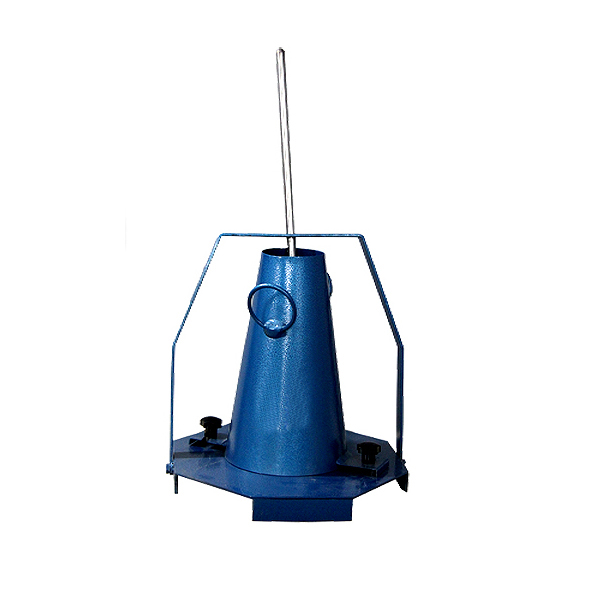-

Slump Test Apparatus
Slump Test Apparatus
Introduction The oldest, most widely used test for determining workability. This test is used to determine the workability of fresh concrete, which would normally be undertaken at the point of delivery to ensure the concrete, is of adequate consistency for placement. The test is applicable to concrete of medium workability. The device is a hollow cone-shaped mould. The mold is filled in three layers of each volume. Each layer is rodded with a 16mm steel rod 25 times. The mould is then lifted away and the change in the height of the concrete is measured against the mould. The slump test is a measure of the resistance of concrete to flow under it own weight. General Descriptions & Specifications The apparatus comprise of a slump cone with handles made of mild steel sheet, a chrome plated steel tamping rod of 16 mm diameter X 600 mm long, rounded off at one end, with a scale marked on it and a steel base plate with a carrying handle. The mould for the test specimen will be in the form of frustum of a cone having the following internal dimensions as follows. Dimensions
Cm.
Bottom diameter
Top diameter
Height
20
10
30
The Cone is constructed of metal of at least 1.6 mm thickness and the top and bottom are open and at right angles to the axis of the cone. The mould have a smooth internal surface and provided with suitable foot pieces to a base plate and also handles to facilitate lifting it from the moulded concrete test specimen in a vertical direction as required by the test. The base plate is provided with cleats & swivel handle. Optional Accessories CONCRETE SCOOP.
FUNNEL FOR POURING CONCRETE IN CONE STRAIGHT EDGE
